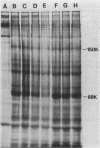Abstract
A novel nucleoside with an oxetanosyl-N-glycoside has been recently isolated from a culture filtrate from Bacillus megaterium and named oxetanocin A (N. Shimada, S. Hasegawa, T. Harada, T. Tomisawa, A. Fujii, and T. Takita, J. Antibiot. 39:1623-1625, 1986). In this study, we evaluated the antiherpesvirus activity of oxetanocin A and its derivatives and found that 9-(2-deoxy-2-hydroxymethyl-beta-D-erythro-oxetanosyl)guanine (OXT-G) was very potent and selective in inhibiting the replication of human cytomegalovirus (HCMV) in vitro. The median effective concentration for HCMV strain AD169 was 1.0 microgram/ml, and that for herpes simplex virus type 2 strain 186 was 3.5 micrograms/ml. The selectivity index, based on the ratio of the median inhibitory concentration for cell growth of human diploid fibroblasts to the median effective concentration for HCMV plaque formation, was more than 300. The synthesis of HCMV-induced late polypeptides such as the 150,000-molecular-weight capsid and the 68,000-molecular-weight major matrix proteins was strongly suppressed when OXT-G (5 micrograms/ml) was added to the cultures at the beginning of infection. At this concentration of OXT-G, the amount of HCMV DNA detected in the drug-treated infected cells was less than 1/10 of that detected in the infected control cells. The results suggest that the mode of action of OXT-G is inhibition of viral replication by impairing the viral DNA synthesis.
Full text
PDF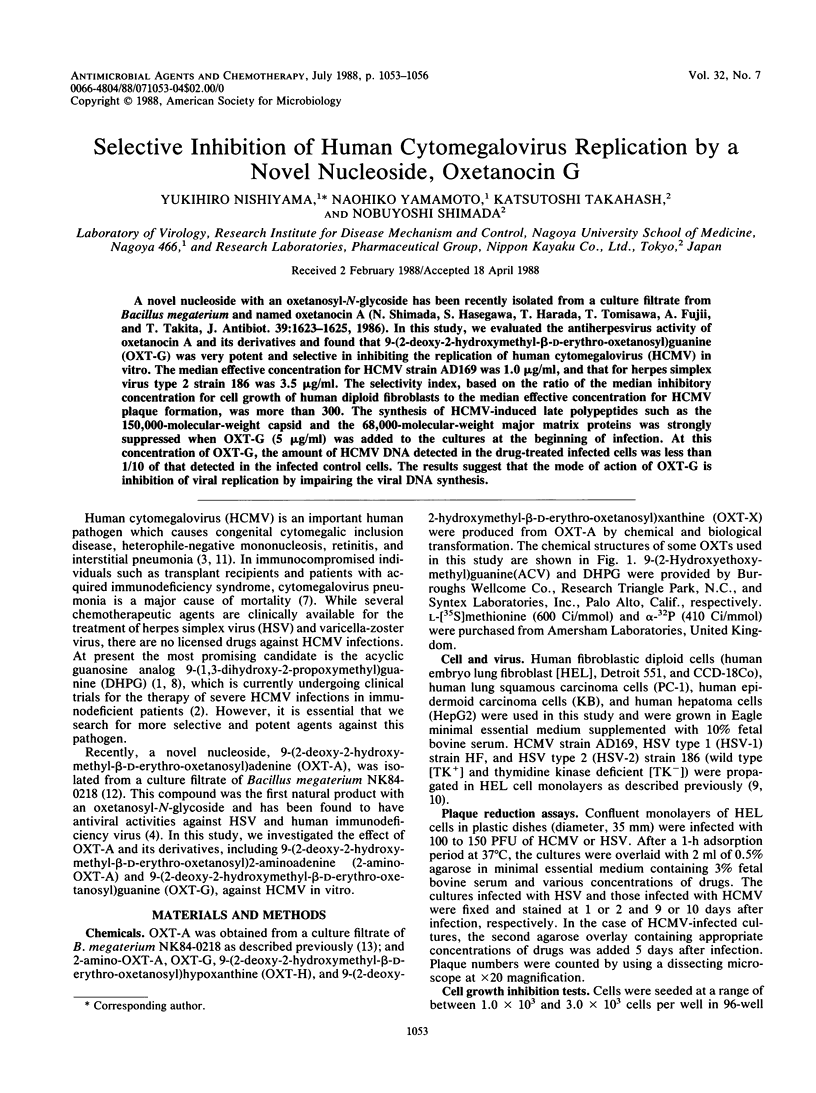
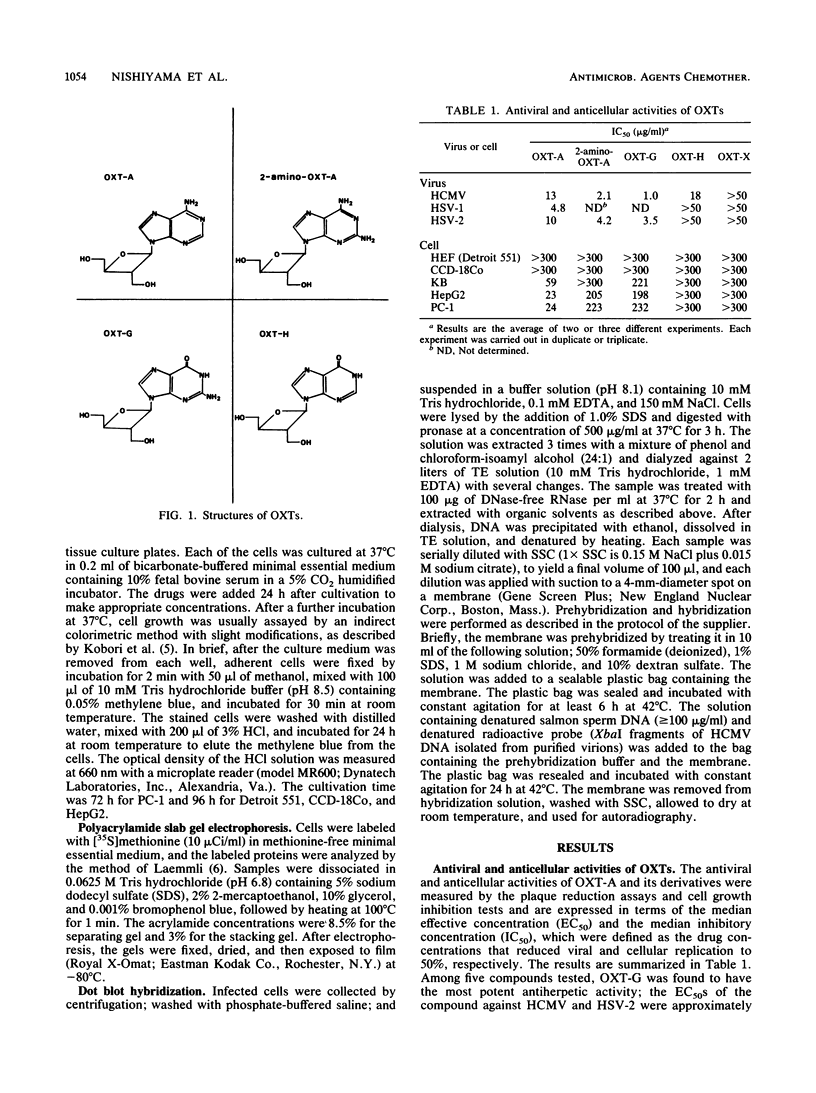
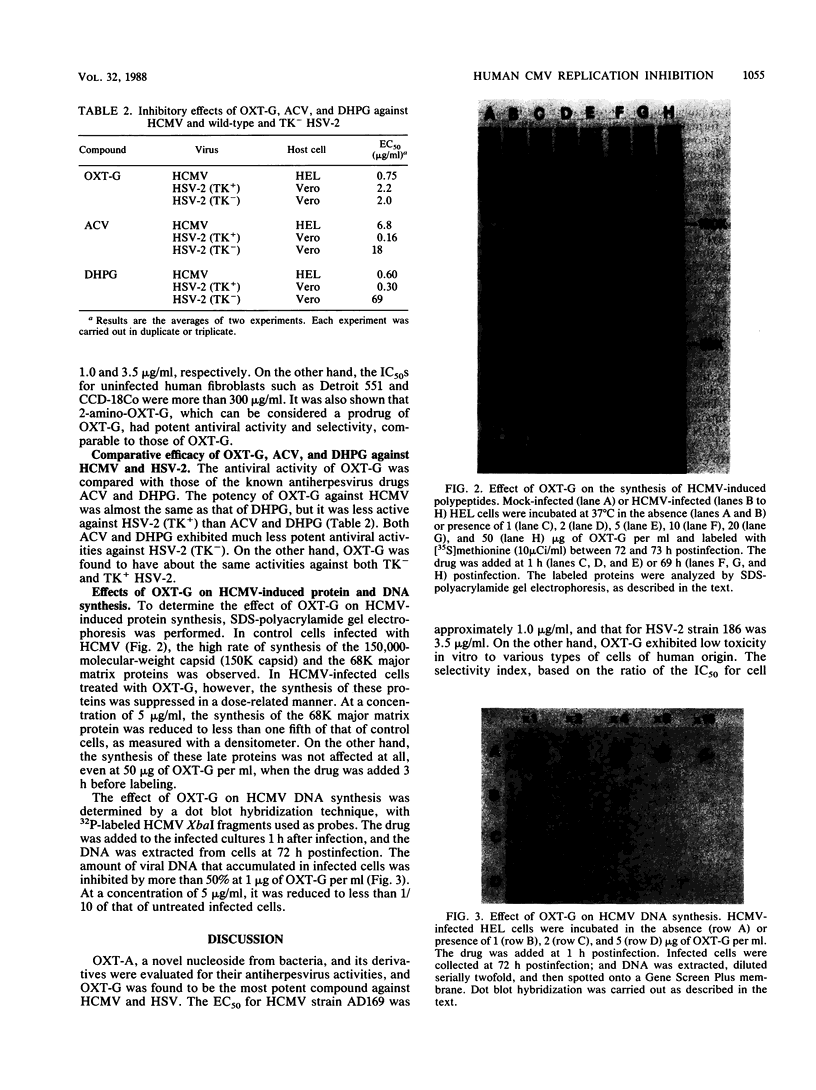
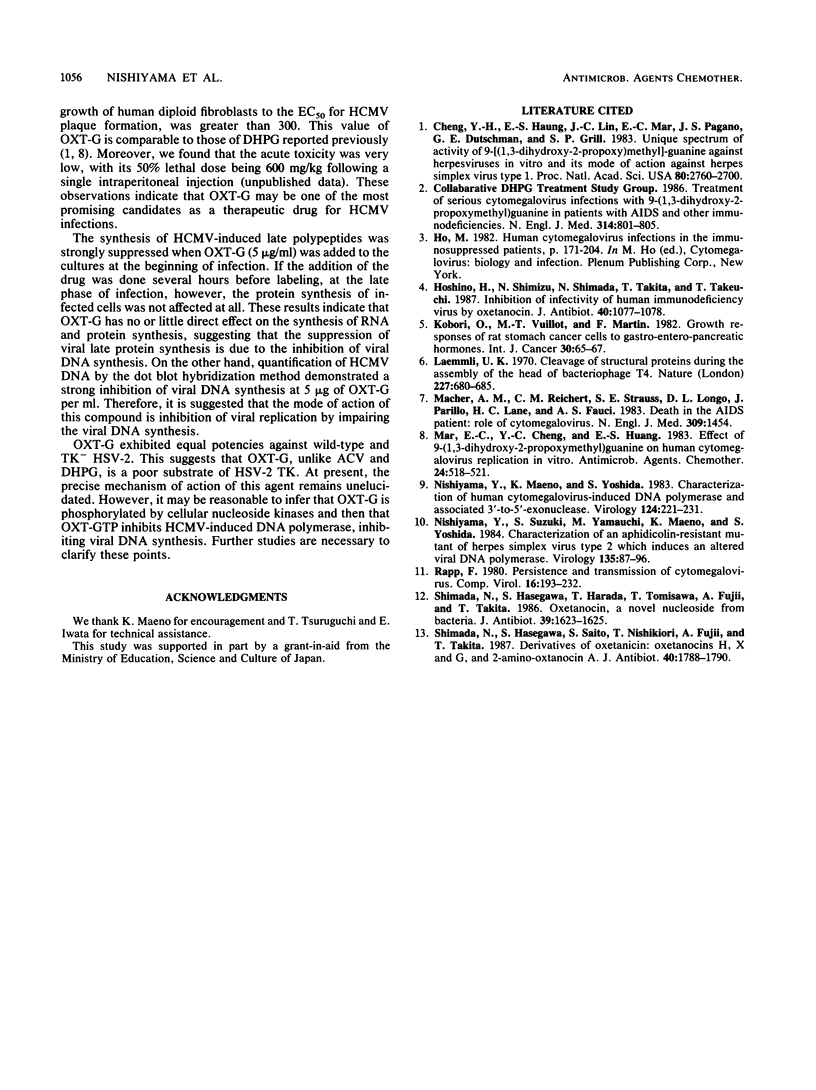
Images in this article
Selected References
These references are in PubMed. This may not be the complete list of references from this article.
- Hoshino H., Shimizu N., Shimada N., Takita T., Takeuchi T. Inhibition of infectivity of human immunodeficiency virus by oxetanocin. J Antibiot (Tokyo) 1987 Jul;40(7):1077–1078. doi: 10.7164/antibiotics.40.1077. [DOI] [PubMed] [Google Scholar]
- Kobori O., Vuillot M. T., Martin F. Growth responses of rat stomach cancer cells to gastro-entero-pancreatic hormones. Int J Cancer. 1982 Jul 15;30(1):65–67. doi: 10.1002/ijc.2910300112. [DOI] [PubMed] [Google Scholar]
- Laemmli U. K. Cleavage of structural proteins during the assembly of the head of bacteriophage T4. Nature. 1970 Aug 15;227(5259):680–685. doi: 10.1038/227680a0. [DOI] [PubMed] [Google Scholar]
- Macher A. M., Reichert C. M., Straus S. E., Longo D. L., Parrillo J., Lane H. C., Fauci A. S., Rook A. H., Manischewitz J. F., Quinnan G. V., Jr Death in the AIDS patient: role of cytomegalovirus. N Engl J Med. 1983 Dec 8;309(23):1454–1454. doi: 10.1056/NEJM198312083092312. [DOI] [PubMed] [Google Scholar]
- Mar E. C., Cheng Y. C., Huang E. S. Effect of 9-(1,3-dihydroxy-2-propoxymethyl)guanine on human cytomegalovirus replication in vitro. Antimicrob Agents Chemother. 1983 Oct;24(4):518–521. doi: 10.1128/aac.24.4.518. [DOI] [PMC free article] [PubMed] [Google Scholar]
- Nishiyama Y., Maeno K., Yoshida S. Characterization of human cytomegalovirus-induced DNA polymerase and the associated 3'-to-5', exonuclease. Virology. 1983 Jan 30;124(2):221–231. doi: 10.1016/0042-6822(83)90339-2. [DOI] [PubMed] [Google Scholar]
- Nishiyama Y., Suzuki S., Yamauchi M., Maeno K., Yoshida S. Characterization of an aphidicolin-resistant mutant of herpes simplex virus type 2 which induces an altered viral DNA polymerase. Virology. 1984 May;135(1):87–96. doi: 10.1016/0042-6822(84)90119-3. [DOI] [PubMed] [Google Scholar]
- Shimada N., Hasegawa S., Harada T., Tomisawa T., Fujii A., Takita T. Oxetanocin, a novel nucleoside from bacteria. J Antibiot (Tokyo) 1986 Nov;39(11):1623–1625. doi: 10.7164/antibiotics.39.1623. [DOI] [PubMed] [Google Scholar]
- Shimada N., Hasegawa S., Saito S., Nishikiori T., Fujii A., Takita T. Derivatives of oxetanocin: oxetanocins H, X and G, and 2-aminooxetanocin A. J Antibiot (Tokyo) 1987 Dec;40(12):1788–1790. doi: 10.7164/antibiotics.40.1788. [DOI] [PubMed] [Google Scholar]



